Micro Mobility Sparrow XL Bedienungsanleitung
- Typ
- Bedienungsanleitung

MICRO SPARROW XL
User Manual
Deutsch
Bedienungsanleitung
28
80
Nederlands
Gebruiksaanwijzing
158
Русский язык
Руководство пользователя
1
English
User Manual
106
Español
Manual de usuario
184
中文
用户指南
54
Français
Manuel de l’utilisateur
132
Italiano
Istruzioni per l’uso
210
한국의
사용 설명서

2
.
.
.
.
.
.
Before using for the rst time ...........................................................................................
Check that the goods are all present ...............................................................................
Before each trip ....................................................................................................................
User Manual ............................................................................................................................
Explanation of terms and symbols .....................................................................................
Unit identication ................................................................................................................
What to do aer a fall or accident ....................................................................................
Riding on public areas .........................................................................................................
Wear and tear .......................................................................................................................
Battery instructions for use ...............................................................................................
Protection against the .....................................................................................................
Transporting the electric scooter .....................................................................................
Storage ...................................................................................................................................
Cleaning .................................................................................................................................
Repair .....................................................................................................................................
Instructions for disposal .....................................................................................................
–
Components
Initial setup
Intended use
General information
Instructions for use
Safety instructions
CONTENTS
.
Side stand ..............................................................................................................................
Charging the battery ...........................................................................................................
Brakes ........................................................................................................................... –
Operating the foot brake ....................................................................................................
Driving with the electric scooter .......................................................................................
Multi-control system ..........................................................................................................
Operation
EN

3
.
.
.
.
.
.
.
Recharge Policy ....................................................................................................................
Battery maintenance ..........................................................................................................
Maintenance
Technical data
Warranty conditions
Service record
EN
Scope of warranty services ................................................................................................
Warranty
Declaration of conformity
–
Micro-pass

4
COMPONENTS
Handlebar
Steering head
Wheel
Anti-slip mat
Wheel fork
Charging socket &
Power button
Clamp
Steering column
Brake
Hand grip
EN
Throttle

5
Brake
User Manual
Before you begin using the electric scooter, please take the time to read the user
manual carefully, especially the safety instructions. Please observe the road regulations
for driving electric scooters which are also applicable in other countries and which may
dier. Please keep this user manual for future reference. If you pass the electric scooter
to a third party, please be sure to pass on this user manual.
This manual contains many warnings and information to maintain, inspect or properly
use your E-Scooter. Still, riding the E-Scooter can be a dangerous activity. Like other
e-mobility products, this product can and is intended to move and it is therefore
possible to lose control, fall o and/or get into dangerous situations that totally out
of expectation. The manual alone cannot cover all situations where injury may occur.
Failure to use appropriate caution and serious attention to operate the product will
increase risk of severe injury.
By using the E-Scooter, the user acknowledges and accepts responsibility of all risks of
operating this product.
GENERAL INFORMATION
EN
To Parents / Supervisors:
PARENTS / SUPERVISING ADULT MUST TEACH CHILDREN HOW TO SAFELY RIDE
THIS SCOOTER. If the rider fails to use common sense and heed these warnings, there
is an increased risk of damage, serious injury or possible death.
USE SCOOTERS AT YOUR OWN RISK AND USE COMMON SENSE.
Parental and Adult Responsibility and Supervision are Necessary.

6
Explanation of terms and symbols
CAUTION
NOTE
WARNING
The purpose of the security symbols is to draw your attention to possible dangers. Read
the explanations carefully and make sure you understand the security symbols. Failure
to follow the safety instructions can lead to personal injury or injury to third parties as
well as damage to property.
The following symbols and signal words are used in this original user manual, on the
electric scooter, or on the packaging:
Indicates a potential low-risk hazard, which may result in minor or
moderate personal injury if not observed. This signal word is not used for
risks that involve purely material damage.
Indicates practical information and tips, which facilitate optimal use
of the electric scooter.
Indicates a potential medium-risk hazard, which may result in serious or
fatal physical injury if not observed. This signal word is not used for risks
that involve purely material damage.
EN

7
The electric scooter is intended exclusively for use as a scooter on dened roads and
paths.
The electric scooter is intended for the transport of one person.
The electric scooter is designed for persons with a maximum weight of 100 kg, and a
maximum height of 170 cm.
Please ensure you have read and understood the road trac regulations of your
country before you use the electric scooter.
The electric scooter is not suitable for transporting luggage.
The electric scooter is for private use only and not for commercial purposes.
The electric scooter is suitable for persons over the age of 12.
The intended use also includes compliance with the information in the chapters
‘Notes on use’ and ‘Maintenance’.
Use the electric scooter only as described in the original user manual. Any other
type of use is considered to be non-compliant and may lead to accidents, personal
injury or damage to property.
Intended use
EN
The recommended rider age is only an
estimate and can be aected by the rider's
size, weight or skills. Any rider unable to
t comfortably on the scooter should not
attempt to ride it. A parent's decision to allow
his or her child to ride this product should be
based on the child's maturity, skill and ability
to follow rules.
NOTE

8
for using the electric scooter
SAFETY INSTRUCTIONS
WARNING
Only use the electic scooter on suitable surfaces (at, clean, dry and where possible
away from other road users).
Do not use the electric scooter if you are not entirely familiar with its operation and
functions. Practice driving your electric scooter rst in wide open and safe space.
The scooter must not be used by persons with limited physical, sensory or mental
capacity, or lack of experience and expertise.
Assure that young riders have been given supervision or instruction concerning use
of the product by a person responsible for their safety.
The additional electronic brake assistance (motor brake) may lead to a shorter
braking distance. Please be aware that the motor brake is not supported if …
• the battery is discharged and you are riding with body power alone.
• the battery is 100% charged and hence energy cannot be regenerated.
Avoid riding at dusk or in poorly lit conditions.
For optimum visibility and safety, equip your electric scooter with lighting and
always ride with the lights switched on.
Always wear an approved helmet when driving your electric scooter. Keep the
chinstrap securely buckled. Always wear a helmet, wrist-pads, elbow-pads, knee-
pads and shoes with rubber soles when driving the electric scooter.
Don’t use headphones or a cell phone when riding.
Never hitch a ride with another vehicle.
Do not drink alcohol and ride.
Do not ride indoors or on surfaces that could become damaged such as carpet or
ooring.
Keep your ngers and other body parts away from the wheels and all other moving
components.
Avoid steep descents as they may lead to falls.
EN

9
for using a riding mode with motion-control
WARNING
Please note that riding with electrical support takes getting used to. When riding,
make sure that your body is facing forward, rather than backward, otherwise
accelerating may li the front wheel o the ground.
Never brake by rubbing the shoe soles on the ground. This movement activates the
motion-control system (assisted pedalling), which in turn triggers the motion sensor
and acceleration of the motor.
Never ride with motor support on the pavement.
Always pay attention to other road users. The misconduct of others may result in
accidents and injuries.
Always ride gently and pay particular attention to the condition of the road.
Unpredictable road conditions, such as slipperiness or foliage, may lead to an
increased risk of skidding.
Do not jump with the scooter and always make sure to avoid potholes, kerbs and
other obstacles.
Do not touch the brake aer prolonged braking; it may be hot.
If the electric scooter is exposed to wetness due to wet weather or cleaning, the
moisture may eect the responsiveness of the braking system. Ride the scooter in a
safe place to dry the brakes aer cleaning.
Never store the electric scooter in living areas or near ammable objects.
EN
Your insurance policies may not provide
coverage for accidents involving the use of
this product. Contact your insurance company
to determine if coverage is provided and for
more information regarding recreational use
and the usage on public roads.
NOTE

10
for using the battery and charger
WARNING
EN
Make sure only to charge the battery with the enclosed charger and only at
temperatures between 5° and 25° Celsius.
Follow the safety instructions on the battery.
Never charge the battery unattended.
When charging the battery, ensure proper plug connection, adequate ventilation and
a dry environment.
Never bring the charger, the mains and connection cables into contact with water
as this may cause an electric shock. Do not touch the battery and charger with wet
hands.
Check the connecting plug and charger at regular intervals. If there is any damage,
have them replaced.
Always store the battery at temperatures between 5° and 25° Celsius.
Keep the battery out of reach of children and animals at all times.
Any repairs and maintenance of the battery or charger must be carried out by a
specialist.
The installed batteries are rechargeable lithium-ion batteries. Never charge
batteries that are not intended to be recharged.
Don’t plug the charger continueously in the power socket when the charger is not in
use.
Do not deform, modify, disassemble or apply solder directly to the battery.
Do not charge or leave the battery near active heating devices.
Do not dispose of a battery in re or water.
Avoid connecting of + and - terminals with metallic objects; store the battery
separately to avoid contact with metallic materials.
The charger is not a toy and shall only be operated by adults.

11
for attachments and modications
WARNING
Do not modify the electric scooter or install incorrect accessories as this will put
your safety at risk.
The use of unauthorized accessories may result in serious injury or damage to the
electric scooter.
‘Customization' or ’Tuning' of the electric scooter is forbidden.
Do not hang items such as bags on the handlebar, as this will have an adverse eect
on the handling characteristics.
for setup, maintenance and repair
WARNING
Incorrect tightening of screws may lead to material fatigue. Screws become so
when they are subjected to excessive stress and may tear. This increases the risk of
accidents and injuries. Always use a torque spanner to tighten the screws.
Self-locking xings can lose their eectiveness aer several months.
Always consult a specialist for repairs to the drive system.
Make sure that the bearings are properly maintained at all times.
EN

12
INSTRUCTIONS FOR USE
Unit identication
The serial number is found on the underside of the footboard. Please note the serial
number of your electric scooter.
More information about your scooter can be found on the adhesive label axed to
the scooter.
xxxxxxxxxxxxxxx
Riding on public areas
The electric scooter is not approved for general use on public roads. Please note that
each country has specic regulations and restrictions for electric vehicles in road trac
(especially in terms of maximum speed, performance and authorised roads). Please
inform yourself about the applicable guidelines for your country in person and in detail.
What to do aer a fall or accident
Aer a fall or accident, bring your electric scooter to an authorised service centre and
have it checked for any damage.
EN

13
Wear and tear
Use of the electric scooter results in a natural wear and tear process. To ensure safe
riding at all times, please read the chapter ‘Maintenance’, observe the maintenance
intervals and have them recorded in the service record by an authorized service centre.
Furthermore, follow the instructions in the 'Before each trip' section, each time you
start up your electric scooter.
Battery instructions for use
The built-in lithium-ion battery is a high-tech product which provides excellent
performance with correct handling and maintenance. Please read and follow the
section ‘Charging the battery’ in the chapter ‘Operation’ and the instructions for
‘Battery maintenance’ in the chapter ‘Maintenance’.
Protection against the
Ensure that you never leave your electric scooter unattended, and always protect it
from the with a suitable lock. Use a commercially available bicycle lock to secure the
electric scooter in the area of the folding mechanism.
Transporting the electric scooter
The batteries are subject to legislation for hazardous goods. Special packaging and
labelling requirements apply to transport by third parties (e.g. air freight or parcel
service). In the case of shipment, please contact an expert for hazardous goods. Do not
transport or ship damaged batteries.
Storage
Do not leave your scooter in direct sunlight or cold weather for extended periods of
time. The ideal storage temperature for your scooter and battery is between 15° to 20°
Celsius. Do not store your electric scooter in living areas, but in the garage.
EN

14
Repair
Cleaning
Have all repairs performed by an authorized dealer or an authorized service centre. Do
not carry out any repairs on electrical components yourself. Only a specialist may open
enclosures with built-in electrical components.
To prevent corrosion of the screws and unnecessary wear and tear, it is advisable to
thoroughly clean and dry the unit every three months and aer every ride in the rain.
Aer cleaning, rinse the scooter with clean water to remove any traces of the cleaning
agent used. Then dry the scooter with a cloth.
Use device-specic cleaning agents and care
products as well as a so sponge. Never use
solvents for cleaning and avoid cleaning the
scooter directly under running water.
Do not perform any cleaning or maintenance
when the power is on or the battery is
charging and do not spray liquid directly onto
any part of the vehicle.
NOTE
WARNING
Instructions for disposal
Pay attention to the environment during disposal and observe the following
instructions:
Only dispose of the electric scooter and associated components (e.g. battery) at an
approved disposal company or via the community disposal facility.
Observe the current regulations. If in doubt, consult your disposal
facility for environmentally sound disposal. Batteries and electrical
appliances must not be disposed of with domestic waste!
EN

15
EN
Before using for the rst time
Check that the goods are all present.
The end of this user manual contains the Micro-pass. Fill out the Micro-pass
completely and store it together with the purchase receipt. The Micro-pass enables
a smooth processing of repairs and warranty issues.
The battery is only partially charged upon delivery. Before using for the rst time,
fully charge the battery using the charger provided.
Assemble the handlebar
• Take out the handlebar, loose the upper cover and two screw bolts.
Assemble the vertical tube:
• Plug in the connector of throttle cable.
• Slide the vertical tube on the fork.
• Align the handlebar and the front wheel and then tight the screws on the clamp.
Generation
Item No.
Unit
Electric
scooter
Charger
Hex key
User
Manual
X
em
em
em
em
Micro
Sparrow XL
OPERATION

16
Before each trip
The electric scooter must be checked for its roadworthiness before each trip. The
vehicle is delivered by the manufacturer fully ready for use. Because defects potentially
impairing the function of the vehicle may occur during transport as well as during any
periods o the road, please always pay attention to the following points before using for
the rst time and before each trip:
Test item Test content
General condition Are all screws tightened rmly and all components secured?
Brakes Are the brakes set correctly and fully functional?
Folding mechanism Has the folding mechanism clicked into place properly and is
the clamping lever closed and tightened rmly?
Side stand Is the side stand folded properly under the footboard?
Battery charge status Is the battery suciently charged?
Current riding mode Which driving mode is currently set?
ON / OFF Check if the ON/OFF switch is working properly and whether
your scooter is currently ON or OFF?
EN

17
During each trip, make sure that the side
stand is always folded forward correctly.
WARNING
Side stand
The electric scooter has a side stand. This is located on the side under the footboard,
just below the folding mechanism. Always fold in the stand so it can be folded down
again with the toes when required.
Image:
Side stand folded out
Image:
Side stand folded in
EN
Operation

18
Charging the battery
The following describes the charging process:
Connect the charger to an electrical outlet. The LED display on the charger should
now light green.
Ensure the scooter is turned o before charging and remains o while charging.
Now connect the electric scooter to the charger. You can see that the charger and
scooter are connected correctly when the LED display on the power supply unit
changes to red (this may take a few seconds).
When the scooter is fully charged, the LED display on the charger changes back to
green.
Each charge cycle from empty to full will take approximately 3 hours.
Your charger may get warm during use. This is normal and is no cause for concern.
Image:
Charging the electric scooter
The power button on the electric scooter
displays the battery power level: Green
indicates a high power level, yellow indicates
a middle power level and red means the
battery is on low power level.
NOTE
EN

19
Image:
Charging the electric scooter
Brakes
Depending on the model, your electric scooter may be equipped with one or more
brakes.
Whenever possible, use several brakes at the same time during braking.
Change the brakes during long downhill rides to avoid overheating.
The following overview illustrates your scooter’s brakes:
Generation
Item No.
Unit
Foot brake
on the rear
wheel
Regenerative
brake (motor
brake) on the
throttle grip
Hand brake
on the front
wheel
X
em
em
em
em
Micro
Sparrow XL
Damp or wet road surfaces result in a longer
braking distance. Be careful and reduce the
speed on slippery or uneven road surfaces.
WARNING
Operating the foot brake
During braking, shi the body so that the centre of gravity points towards the rear
wheel to achieve the best braking performance. Shiing your weight backwards /
downwards reduces the braking distance considerably. Operating the foot brake
activates the motor brake automatically.
EN

20
Multi-control system
This electric scooter is operated by either thumb throttle or motion control.
The default setting is using by thumb throttle to start when the rider is kicking from
approx. 5km/h. There is an alternative to use kick control function. In order to change
the riding modes or select other features, please see the Micro APP instruction manual.
Sensors detect the kicking movement (= push-o from the ground) the driver makes,
and the scooter subsequently provides support with energy similar to that of an electric
bicycle with a support motor.
Important information
Motion control only becomes active from approx. 5 km/h. This means the rider must
use body power alone to accelerate to 5 km/h (1-2 kicks) before the initial support is
noticeable.
The scooter keeps the speed which the rider accelerates to by kicking o the ground.
Pressing the brake triggers a sensor which stops the motor.
Please note that riding with electrical support
takes getting used to.
The acceleration is much greater than with
a normal kicking movement. This type of
acceleration is initially unusual and can be
abrupt. When riding for the rst time, please
be extremely cautious.
WARNING
Driving with the electric scooter
Ride slowly to become accustomed to the
novel riding sensation, especially when
riding for the rst time. Always be aware that
travelling at higher speeds on the electric
scooter will also result in a longer braking
distance.
WARNING
EN
Seite wird geladen ...
Seite wird geladen ...
Seite wird geladen ...
Seite wird geladen ...
Seite wird geladen ...
Seite wird geladen ...
Seite wird geladen ...
Seite wird geladen ...
Seite wird geladen ...
Seite wird geladen ...
Seite wird geladen ...
Seite wird geladen ...
Seite wird geladen ...
Seite wird geladen ...
Seite wird geladen ...
Seite wird geladen ...
Seite wird geladen ...
Seite wird geladen ...
Seite wird geladen ...
Seite wird geladen ...
Seite wird geladen ...
Seite wird geladen ...
Seite wird geladen ...
Seite wird geladen ...
Seite wird geladen ...
Seite wird geladen ...
Seite wird geladen ...
Seite wird geladen ...
Seite wird geladen ...
Seite wird geladen ...
Seite wird geladen ...
Seite wird geladen ...
Seite wird geladen ...
Seite wird geladen ...
Seite wird geladen ...
Seite wird geladen ...
Seite wird geladen ...
Seite wird geladen ...
Seite wird geladen ...
Seite wird geladen ...
Seite wird geladen ...
Seite wird geladen ...
Seite wird geladen ...
Seite wird geladen ...
Seite wird geladen ...
Seite wird geladen ...
Seite wird geladen ...
Seite wird geladen ...
Seite wird geladen ...
Seite wird geladen ...
Seite wird geladen ...
Seite wird geladen ...
Seite wird geladen ...
Seite wird geladen ...
Seite wird geladen ...
Seite wird geladen ...
Seite wird geladen ...
Seite wird geladen ...
Seite wird geladen ...
Seite wird geladen ...
Seite wird geladen ...
Seite wird geladen ...
Seite wird geladen ...
Seite wird geladen ...
Seite wird geladen ...
Seite wird geladen ...
Seite wird geladen ...
Seite wird geladen ...
Seite wird geladen ...
Seite wird geladen ...
Seite wird geladen ...
Seite wird geladen ...
Seite wird geladen ...
Seite wird geladen ...
Seite wird geladen ...
Seite wird geladen ...
Seite wird geladen ...
Seite wird geladen ...
Seite wird geladen ...
Seite wird geladen ...
Seite wird geladen ...
Seite wird geladen ...
Seite wird geladen ...
Seite wird geladen ...
Seite wird geladen ...
Seite wird geladen ...
Seite wird geladen ...
Seite wird geladen ...
Seite wird geladen ...
Seite wird geladen ...
Seite wird geladen ...
Seite wird geladen ...
Seite wird geladen ...
Seite wird geladen ...
Seite wird geladen ...
Seite wird geladen ...
Seite wird geladen ...
Seite wird geladen ...
Seite wird geladen ...
Seite wird geladen ...
Seite wird geladen ...
Seite wird geladen ...
Seite wird geladen ...
Seite wird geladen ...
Seite wird geladen ...
Seite wird geladen ...
Seite wird geladen ...
Seite wird geladen ...
Seite wird geladen ...
Seite wird geladen ...
Seite wird geladen ...
Seite wird geladen ...
Seite wird geladen ...
Seite wird geladen ...
Seite wird geladen ...
Seite wird geladen ...
Seite wird geladen ...
Seite wird geladen ...
Seite wird geladen ...
Seite wird geladen ...
Seite wird geladen ...
Seite wird geladen ...
Seite wird geladen ...
Seite wird geladen ...
Seite wird geladen ...
Seite wird geladen ...
Seite wird geladen ...
Seite wird geladen ...
Seite wird geladen ...
Seite wird geladen ...
Seite wird geladen ...
Seite wird geladen ...
Seite wird geladen ...
Seite wird geladen ...
Seite wird geladen ...
Seite wird geladen ...
Seite wird geladen ...
Seite wird geladen ...
Seite wird geladen ...
Seite wird geladen ...
Seite wird geladen ...
Seite wird geladen ...
Seite wird geladen ...
Seite wird geladen ...
Seite wird geladen ...
Seite wird geladen ...
Seite wird geladen ...
Seite wird geladen ...
Seite wird geladen ...
Seite wird geladen ...
Seite wird geladen ...
Seite wird geladen ...
Seite wird geladen ...
Seite wird geladen ...
Seite wird geladen ...
Seite wird geladen ...
Seite wird geladen ...
Seite wird geladen ...
Seite wird geladen ...
Seite wird geladen ...
Seite wird geladen ...
Seite wird geladen ...
Seite wird geladen ...
Seite wird geladen ...
Seite wird geladen ...
Seite wird geladen ...
Seite wird geladen ...
Seite wird geladen ...
Seite wird geladen ...
Seite wird geladen ...
Seite wird geladen ...
Seite wird geladen ...
Seite wird geladen ...
Seite wird geladen ...
Seite wird geladen ...
Seite wird geladen ...
Seite wird geladen ...
Seite wird geladen ...
Seite wird geladen ...
Seite wird geladen ...
Seite wird geladen ...
Seite wird geladen ...
Seite wird geladen ...
Seite wird geladen ...
Seite wird geladen ...
Seite wird geladen ...
Seite wird geladen ...
Seite wird geladen ...
Seite wird geladen ...
Seite wird geladen ...
Seite wird geladen ...
Seite wird geladen ...
Seite wird geladen ...
Seite wird geladen ...
Seite wird geladen ...
Seite wird geladen ...
Seite wird geladen ...
Seite wird geladen ...
Seite wird geladen ...
Seite wird geladen ...
Seite wird geladen ...
Seite wird geladen ...
Seite wird geladen ...
Seite wird geladen ...
Seite wird geladen ...
Seite wird geladen ...
Seite wird geladen ...
Seite wird geladen ...
Seite wird geladen ...
Seite wird geladen ...
Seite wird geladen ...
Seite wird geladen ...
Seite wird geladen ...
Seite wird geladen ...
Seite wird geladen ...
-
 1
1
-
 2
2
-
 3
3
-
 4
4
-
 5
5
-
 6
6
-
 7
7
-
 8
8
-
 9
9
-
 10
10
-
 11
11
-
 12
12
-
 13
13
-
 14
14
-
 15
15
-
 16
16
-
 17
17
-
 18
18
-
 19
19
-
 20
20
-
 21
21
-
 22
22
-
 23
23
-
 24
24
-
 25
25
-
 26
26
-
 27
27
-
 28
28
-
 29
29
-
 30
30
-
 31
31
-
 32
32
-
 33
33
-
 34
34
-
 35
35
-
 36
36
-
 37
37
-
 38
38
-
 39
39
-
 40
40
-
 41
41
-
 42
42
-
 43
43
-
 44
44
-
 45
45
-
 46
46
-
 47
47
-
 48
48
-
 49
49
-
 50
50
-
 51
51
-
 52
52
-
 53
53
-
 54
54
-
 55
55
-
 56
56
-
 57
57
-
 58
58
-
 59
59
-
 60
60
-
 61
61
-
 62
62
-
 63
63
-
 64
64
-
 65
65
-
 66
66
-
 67
67
-
 68
68
-
 69
69
-
 70
70
-
 71
71
-
 72
72
-
 73
73
-
 74
74
-
 75
75
-
 76
76
-
 77
77
-
 78
78
-
 79
79
-
 80
80
-
 81
81
-
 82
82
-
 83
83
-
 84
84
-
 85
85
-
 86
86
-
 87
87
-
 88
88
-
 89
89
-
 90
90
-
 91
91
-
 92
92
-
 93
93
-
 94
94
-
 95
95
-
 96
96
-
 97
97
-
 98
98
-
 99
99
-
 100
100
-
 101
101
-
 102
102
-
 103
103
-
 104
104
-
 105
105
-
 106
106
-
 107
107
-
 108
108
-
 109
109
-
 110
110
-
 111
111
-
 112
112
-
 113
113
-
 114
114
-
 115
115
-
 116
116
-
 117
117
-
 118
118
-
 119
119
-
 120
120
-
 121
121
-
 122
122
-
 123
123
-
 124
124
-
 125
125
-
 126
126
-
 127
127
-
 128
128
-
 129
129
-
 130
130
-
 131
131
-
 132
132
-
 133
133
-
 134
134
-
 135
135
-
 136
136
-
 137
137
-
 138
138
-
 139
139
-
 140
140
-
 141
141
-
 142
142
-
 143
143
-
 144
144
-
 145
145
-
 146
146
-
 147
147
-
 148
148
-
 149
149
-
 150
150
-
 151
151
-
 152
152
-
 153
153
-
 154
154
-
 155
155
-
 156
156
-
 157
157
-
 158
158
-
 159
159
-
 160
160
-
 161
161
-
 162
162
-
 163
163
-
 164
164
-
 165
165
-
 166
166
-
 167
167
-
 168
168
-
 169
169
-
 170
170
-
 171
171
-
 172
172
-
 173
173
-
 174
174
-
 175
175
-
 176
176
-
 177
177
-
 178
178
-
 179
179
-
 180
180
-
 181
181
-
 182
182
-
 183
183
-
 184
184
-
 185
185
-
 186
186
-
 187
187
-
 188
188
-
 189
189
-
 190
190
-
 191
191
-
 192
192
-
 193
193
-
 194
194
-
 195
195
-
 196
196
-
 197
197
-
 198
198
-
 199
199
-
 200
200
-
 201
201
-
 202
202
-
 203
203
-
 204
204
-
 205
205
-
 206
206
-
 207
207
-
 208
208
-
 209
209
-
 210
210
-
 211
211
-
 212
212
-
 213
213
-
 214
214
-
 215
215
-
 216
216
-
 217
217
-
 218
218
-
 219
219
-
 220
220
-
 221
221
-
 222
222
-
 223
223
-
 224
224
-
 225
225
-
 226
226
-
 227
227
-
 228
228
-
 229
229
-
 230
230
-
 231
231
-
 232
232
-
 233
233
-
 234
234
-
 235
235
Micro Mobility Sparrow XL Bedienungsanleitung
- Typ
- Bedienungsanleitung
in anderen Sprachen
- English: Micro Mobility Sparrow XL Owner's manual
- français: Micro Mobility Sparrow XL Le manuel du propriétaire
- español: Micro Mobility Sparrow XL El manual del propietario
- italiano: Micro Mobility Sparrow XL Manuale del proprietario
- русский: Micro Mobility Sparrow XL Инструкция по применению
- Nederlands: Micro Mobility Sparrow XL de handleiding
Verwandte Artikel
Andere Dokumente
-
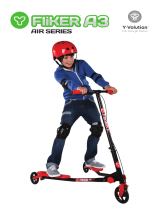 Argos WOW Y FLIKER A3 AIR RED Benutzerhandbuch
Argos WOW Y FLIKER A3 AIR RED Benutzerhandbuch
-
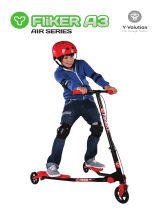 Argos WOW Y FLIKER A3 AIR RED Benutzerhandbuch
Argos WOW Y FLIKER A3 AIR RED Benutzerhandbuch
-
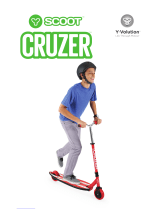 Y Volution Y-Scoot Cruzer Benutzerhandbuch
Y Volution Y-Scoot Cruzer Benutzerhandbuch
-
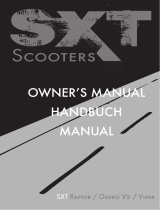 SXT Raptor Bedienungsanleitung
SXT Raptor Bedienungsanleitung
-
Razor 13173895 Benutzerhandbuch
-
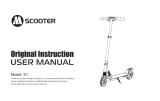 M SCOOTER S1 Original Instruction User Manual
M SCOOTER S1 Original Instruction User Manual
-
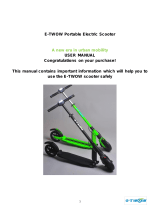 e-TWOW S2 BOOSTER Benutzerhandbuch
e-TWOW S2 BOOSTER Benutzerhandbuch
-
Derbi GP1 50 RACING Bedienungsanleitung
-
Derbi GP1 50 Bedienungsanleitung
-
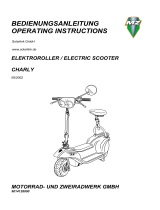 MZ GmbH CHARLY Bedienungsanleitung
MZ GmbH CHARLY Bedienungsanleitung


















































































































































































































































